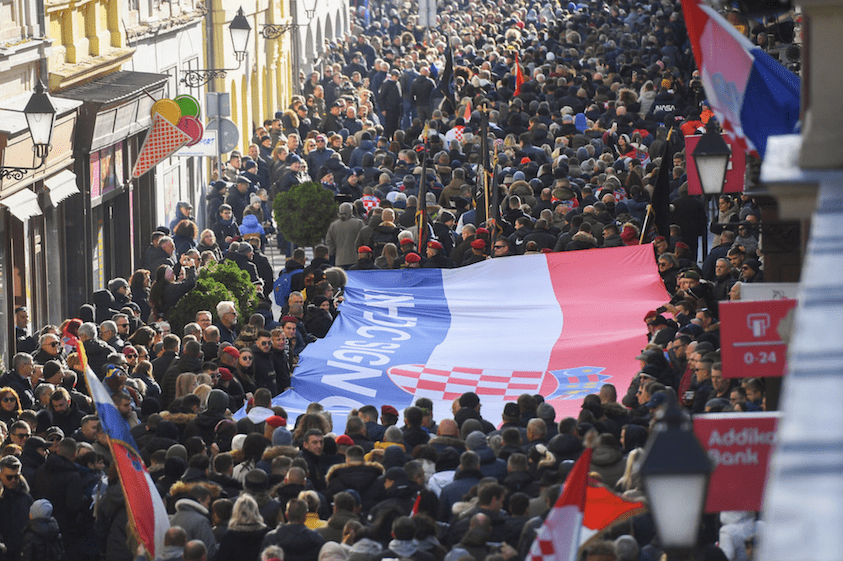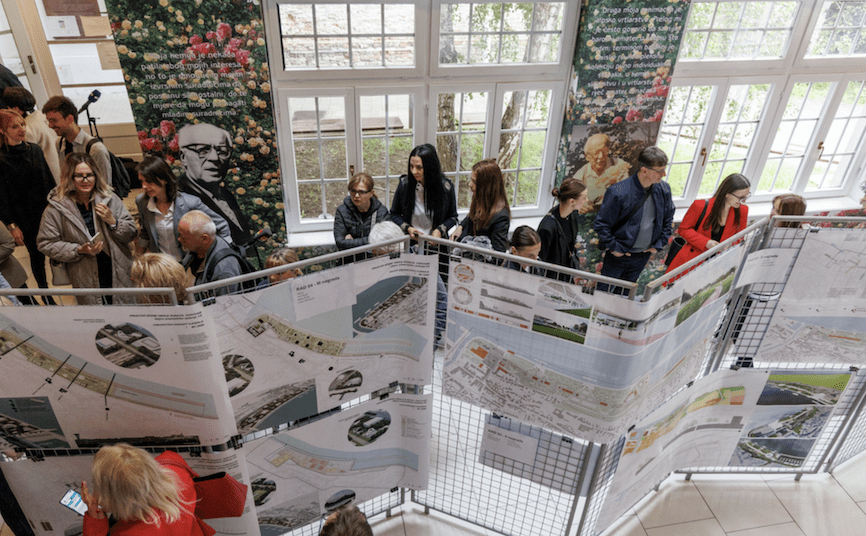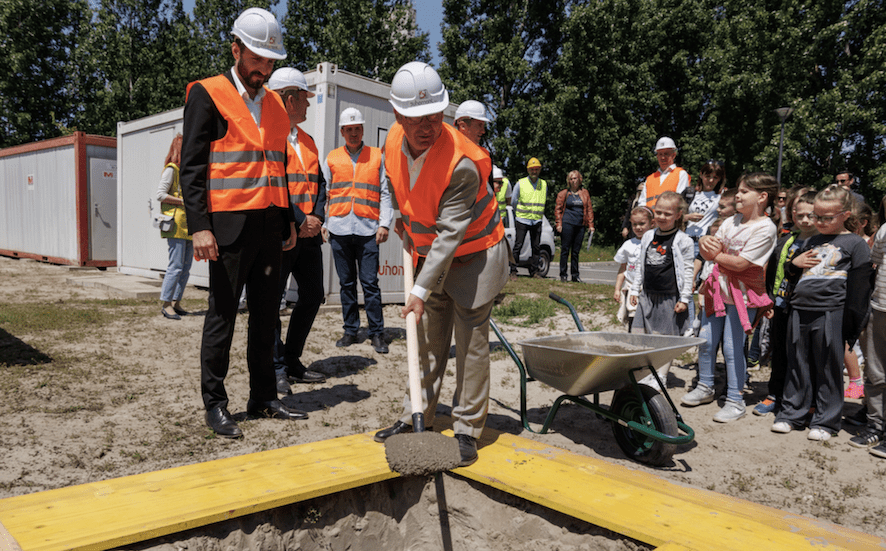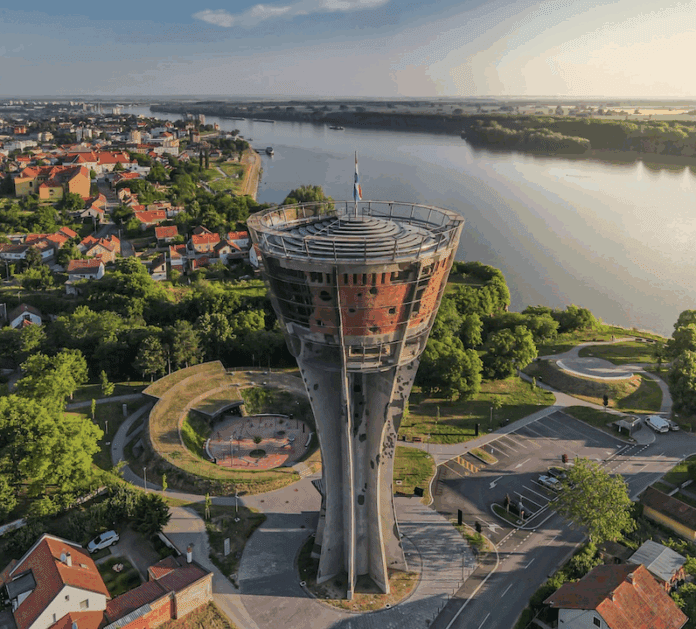Marko Barišić: Discover how Vukovar is transforming its cityscape with the redevelopment of the Danube’s right bank. This includes urban renewal, tourism growth, cultural heritage, and EU-funded projects. Together, these efforts promise a modern, sustainable future for one of Croatia’s most historically significant cities.
Vukovar becomes a better place each year
Year after year, Vukovar is becoming an ever better and more beautiful place to live. All the buildings and houses have long since been renovated, and numerous avenues have been landscaped. Additionally, there is even a promenade along the Danube. The number of people in work is increasing, and more people are returning than leaving. Numerous projects are changing the city’s appearance.
War memorials in Vukovar draw visitors
Many people still come to Vukovar mainly to visit the sites of one of the bloodiest battles of the Homeland War. They come to pay their respects to the few, very brave Croatian defenders who held out for almost three months against the attacks of a numerically superior Serbian aggressor. An indispensable stop on that journey is one of the city’s symbols, the Vukovar water tower, a protected cultural monument and memorial standing 50.33 metres high. It was built between 1963 and 1968.
There is also the Place of Remembrance – the Vukovar hospital. This is followed by the mass grave and Ovčara Memorial Home, the Memorial Cemetery for the victims of the Homeland War, the Memorial Home of Croatian defenders on Trpinjska Road, and the Cross at the confluence of the Vuka and Danube.
Around 40,000 Croatian schoolchildren visit these sites each year – eighth-grade classes come in organised groups. Approximately 50,000 other visitors come as well.

Vučedol museum showcases ancient civilisation
There is also the Vučedol Culture Museum, which bears witness to the long, uninterrupted continuity of life in that region. It is one of the few museums built on the very site where an advanced Indo-European civilisation lived between 3,000 and 2,500 BC. “They came to be called Vučedolci, after that beautiful, peaceful place only five kilometres downstream on the Danube from Vukovar.
They were the first to tame the dog, the first to rear cattle, the first to brew beer, the first to drive a four-wheeled cart, the first to record a date in human history…”, reads the description of the museum.
Some 50,000 tourists arrived in the city last year, accounting for about 80,000 overnight stays. Around 370 river cruise ships with passengers mostly from the United States and various Western European countries come down the Danube. They dock at its riverbank each year.

Education and housing initiatives
Vukovar also has the Lavoslav Ružička Polytechnic, which is housed in a beautifully renovated building in the Borovo naselje quarter. This renovation has rejuvenated that part of the city. The renovation was mainly funded by the European Union. They offered something that others do not have. Among other things, they now have a physiotherapy degree course, which is among the best not only in Croatia but also in the region. Students come there from many countries. After renovation and expansion of its facilities, they are opening other courses as well. They currently have around a thousand students.
In that part of the city, two old buildings of the former dormitory, each containing 76 flats, will be repurposed. Returnees who were waiting for their homes to be rebuilt have been accommodated there. After refurbishment, they will become homes for older people and infirm. Everyone supports this initiative.
New bypass road and hotel project
A bypass is also under construction, which should relieve traffic in the suburban quarters. It was once very heavy and unbearable because of the noise and the multitude of cars and trucks. Finally, the issue of the old Hotel Dunav has been resolved. It will be demolished and a new one built in its place. A construction permit has been issued to a foreign investor. This hotel will be 50 metres high and, as many observers note, will change the city centre’s skyline.
Danube right bank redevelopment plans
But what could most enhance the appearance of the city is the project for the development of the right bank of the Danube. The section of the bank up to now has largely been inaccessible. Vukovar intends to harness the river’s potential as many European cities have done.
A competition was recently announced to find the best way to do this. The first prize was won by two Vukovar architects, Branka Jukić Krajnović and Ivana Amižić. Their design, as described, provides a modern, sustainable space. It integrates park areas, a cultural and social zone, sports infrastructure, tourist amenities, and a cruise ship port. Moreover, its architecture emphasises green roofs and public access to the riverfront.
Major Danube waterfront development
The project is valued at over 53 million euros. It includes building a new river port with a marina, plus a promenade, cycle paths, and parks. Moreover, in that area – which will need to be partly filled with solid material because sand must be dredged from the Danube – the construction of buildings is planned. These will contain public and community functions, mixed-use business and residential premises, and catering and tourist facilities.
The development area, as explained, is located downstream from the mouth of the Vuka river into the Danube. It stretches from the old to the new water tower. This is the central area of Vukovar where there will also be a port – the only Croatian international port on the Danube. The works are expected to be finished by the end of the year. If this happens, it would indeed be great news for all Vukovar residents.

State funding and recognition
All this, as with most of what has been done in Vukovar, will be financed by the Croatian state. Previously some renovations were done by individual counties, but now everything is paid for directly from the state budget. An attempt is being made to obtain funding from European Union sources as well, but not everything can be covered. We should also recall that in surveys by certain media outlets, Vukovar was named the best city in Croatia. This occurred in both the past year and the year before, in the category of education, demography, youth, and social policy.
In the explanation at that time, it was noted that this was due to the low prices for kindergartens – which are also the most beautiful – and that they have in the meantime become free for all. They also pointed to free school supplies, scholarships and awards for top students, newborn bonuses, and subsidies for utility bills for families with three or more children.

It’s clear from these awards that Vukovar is fast becoming one of Croatia’s most liveable cities.
For more information on new and exciting projects in Vukovar visit Grad Vukovar webesite.

